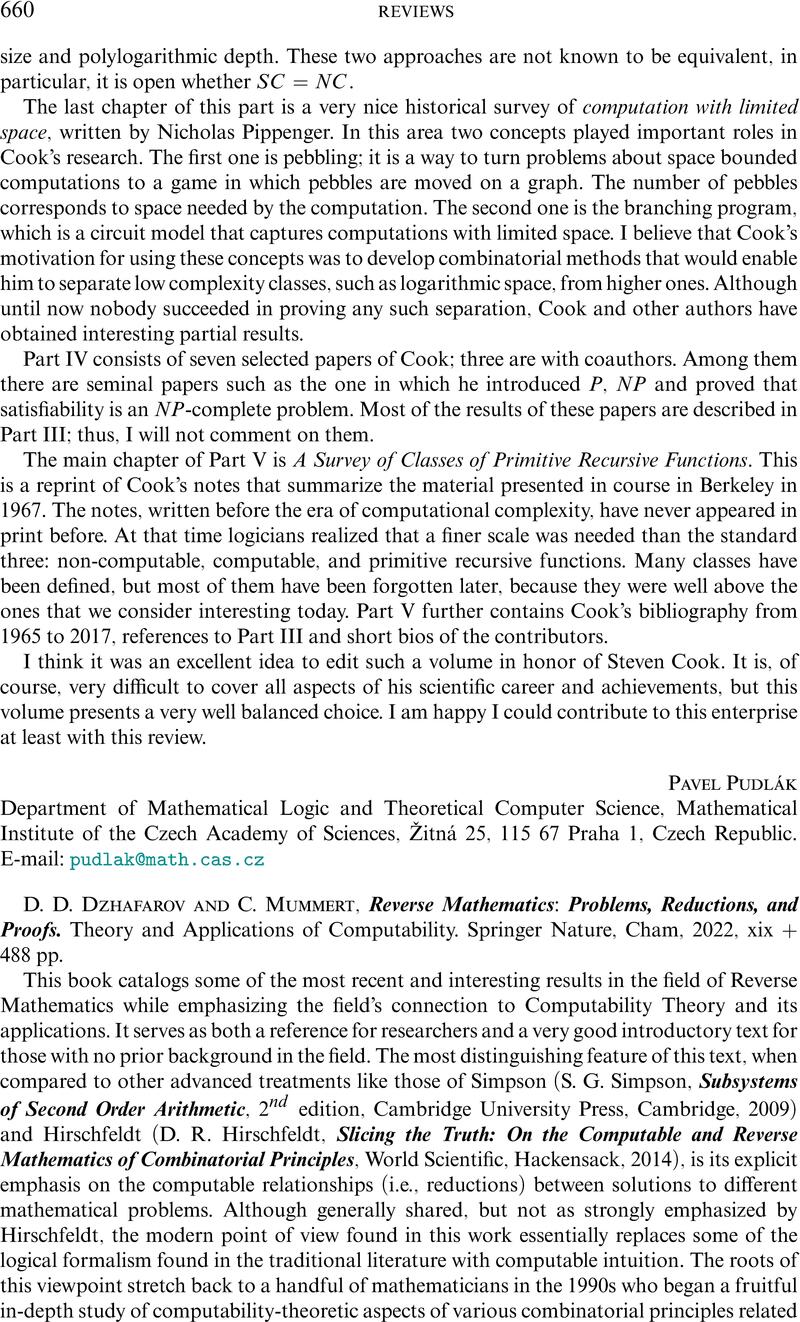No CrossRef data available.
Article contents
D. D. Dzhafarov and C. Mummert, Reverse Mathematics: Problems, Reductions, and Proofs. Theory and Applications of Computability. Springer Nature, Cham, 2022, xix + 488 pp.
Review products
D. D. Dzhafarov and C. Mummert, Reverse Mathematics: Problems, Reductions, and Proofs. Theory and Applications of Computability. Springer Nature, Cham, 2022, xix + 488 pp.
Published online by Cambridge University Press: 23 February 2024
Abstract
An abstract is not available for this content so a preview has been provided. Please use the Get access link above for information on how to access this content.

- Type
- Review
- Information
- Copyright
- © The Author(s), 2024. Published by Cambridge University Press on behalf of The Association for Symbolic Logic



